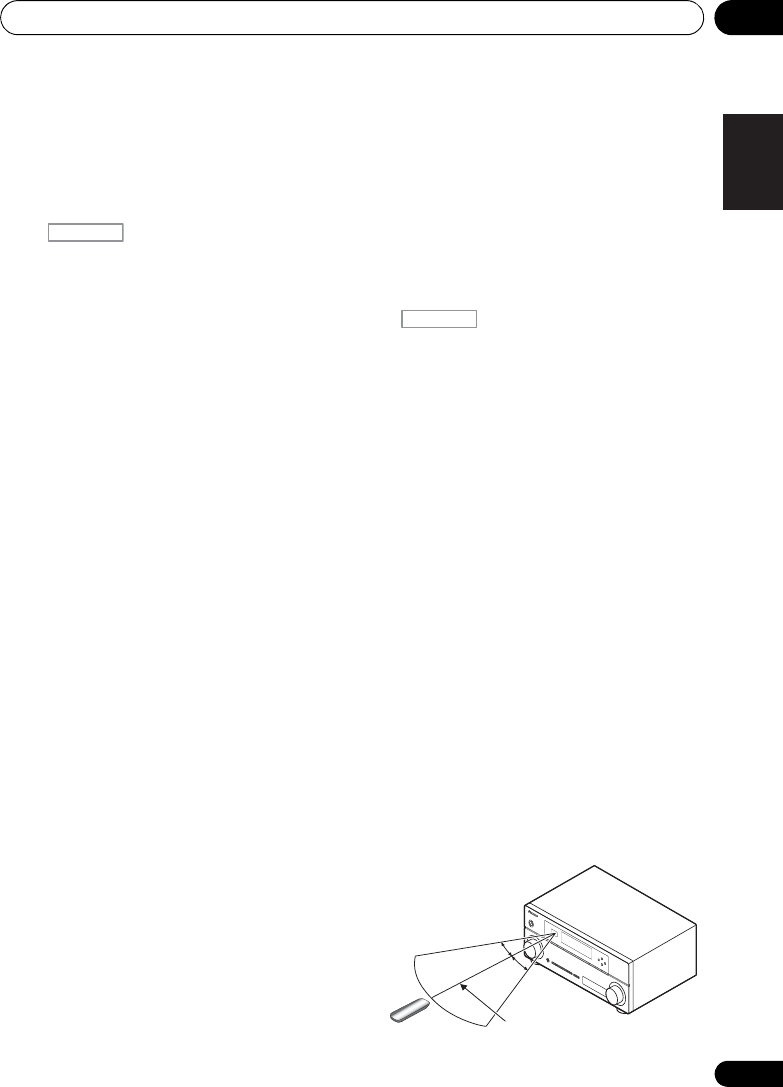
Controls and displays 02
13
En
English
Français
Deutsch
Nederlands
Italiano
Español
7
///
,
ENTER
Use the arrow buttons when setting up your
surround sound system (page 85) and the
Audio or Video options (page 67 or 70).
8 Receiver controls
Press first to access:
PHASE CTRL – Switch on/off Phase Control
(page 61).
STATUS – Check selected receiver settings
(page 74).
PQLS – Select PQLS setting (page 65).
S.RETRIEVER – Press to restore CD quality
sound to compressed audio sources
(page 68).
MIDNIGHT – Switches to Midnight or
Loudness listening (page 67).
SIGNAL SEL – Select an input signal
(page 60).
MCACC – Switch between MCACC presets
(page 60).
SLEEP – Use to put the receiver in sleep
mode and select the amount of time before
sleep (page 74).
CH LEVEL – Press repeatedly to select a
channel, then use / to adjust the level
(page 102).
A.ATT – Attenuates (lowers) the level of an
analog input signal to prevent distortion
(page 74).
DIMMER – Dims or brightens the display
(page 74).
9 LISTENING MODE controls
AUTO/ALC/DIRECT –
Switches between
Auto Surround
(page 56)
, Auto Level
Control mode and Stream Direct mode
(page 59).
STEREO – Switches between stereo
playback and Front Stage Surround
Advance modes (page 59).
STANDARD – Press for Standard decoding
and to switch between the various 2 Pro
Logic IIx and Neo:6 options (page 56).
ADV SURR – Switch between the various
surround modes (page 58).
10 Remote control LED
Lights when a command is sent from the
remote control (page 76).
11
TV CTRL
Set preset code of your TV’s manufacturer
when controlling TV (page 77).
12
Switches the remote to control the receiver
(used to select the white commands above the
number buttons (SIGNAL SEL, etc.)).
Switch to perform operations in the main zone.
Also use to set up surround sound.
13
MASTER VOLUME +/–
Set the listening volume.
14
MUTE
Mutes the sound or restores the sound if it has
been muted (adjusting the volume also
restores the sound).
Operating range of remote control
unit
The remote control may not work properly if:
• There are obstacles between the remote
control and the receiver’s remote sensor.
• Direct sunlight or fluorescent light is
shining onto the remote sensor.
• The receiver is located near a device that is
emitting infrared rays.
• The receiver is operated simultaneously
with another infrared remote control unit.
RECEIVER
RECEIVER
7 m (23 ft.)
30°
30°
VSX-1020_UC.book 13 ページ 2010年1月7日 木曜日 午後6時0分


















